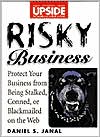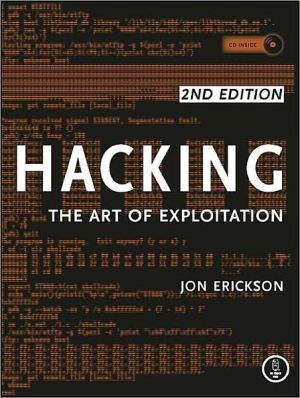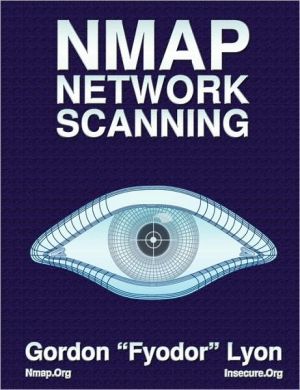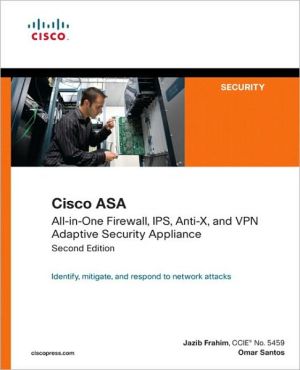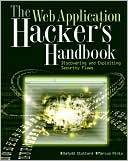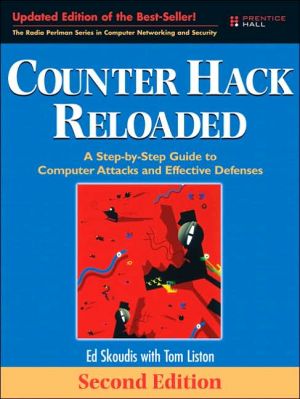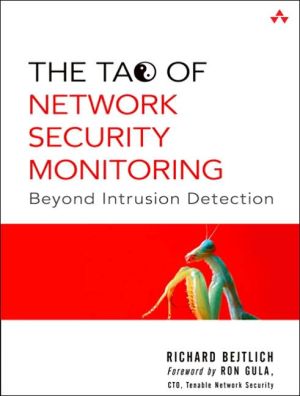Risky Business: How to Protect Yourself from Being Stalked, Conned, Libeled, or Blackmailed on the Web
In Risky Business, Daniel Janal, an online marketing and seasoned technology expert, takes a look at the numerous threats that can wreak havoc on corporations who promote themselves online. Posting cautionary warnings about external risks, Janal provides practical guidelines for setting standards for internal employee use, and - perhaps, most importantly - offers foolproof remedies and preventive techniques for effectively combatting cybercrime. Drawing an the advice of lawyers, law...
Search in google:
In Risky Business, Daniel Janal, an online marketing and seasoned technology expert, takes a look at the numerous threats that can wreak havoc on corporations who promote themselves online. Posting cautionary warnings about external risks, Janal provides practical guidelines for setting standards for internal employee use, and - perhaps, most importantly - offers foolproof remedies and preventive techniques for effectively combatting cybercrime. Drawing an the advice of lawyers, law enforcement officials, government agencies, and investor relations professionals, it also reveals how you can protect yourself and your business. Risky Business gives you the bottom-line information you need to guard against web site risks - plagiarism, libel, copyright, and domain infringement; internal threats to company security - competitive spying, cyberindustrial espionage, employee abuse of Internet privileges; external attacks - stock manipulations from online investors, misinformation funneled through chat rooms, attach Web sites; and dangers to your financial well-being - online fraud, security violations, technical abuses that can affect individuals and organizations. Booknews Offers techniques for recognizing and combatting a wide variety of cybercrime and other threats to businesses on the Internet, including fraud, stock manipulation, impersonation and theft of identity, network sabotage, unauthorized access, proprietary theft, domain infringement of Web sites, attack sites, and employee abuse of Internet privileges. The information presented is based on interviews with lawyers, law enforcement officials, government agencies, and investor relations professionals. Annotation c. by Book News, Inc., Portland, Or.
\ \ Chapter One\ Cyberspace can be a scary place:\ \ \ \ be dangerous for businesses, organizations, nonprofit groups, educational institutions, and associations:\ \ \ \ \ \ \ \ everywhere in the real world. These threats carry over to the Internet as well. Some con games are age-old: The only thing new is that they are online instead of on the phone or in the shopping mall. Other scams are new and stretch the envelope of the Internet's technology as well as our current laws and regulations.\ [] THE COST OF INTERNET CRIME\ Exact figures on the cost of Internet-related crimes are hard to come by. No one has conducted surveys of the costs of crime in cyberspace. In fact, some security experts who consult with financial institutions say their clients would rather eat their losses than have the world find out that their systems are less than 100 percent secure. So we may never know how many bad credit cards are passed online or how much money has been withdrawn from online banks fraudulently.\ in nearly 100 federal district court cases brought by the agency between October 1995 and December 1996, fraudulent sales in these actions cost consumers more than $250 million a year and more than $700 million over the life of the schemes.\ association of information security professionals, reported in March 1997 that computer crime reached $100 million in 1996. A total of 563 major U.S. corporations, government agencies, financial institutions, and universities responded to the survey. While the study was not limited to the Internet, it offers interesting statistics that show how organizations are being attacked, from inside and outside, through computer security systems or through negligence and misuse of company resources.\ breaches ranging from financial fraud, theft of proprietary information and sabotage, to computer viruses and laptop theft. Those reporting financial losses cited the following causes:\ \ \ \ \ \ found 31 percent of the companies found employee abuse of Internet privileges (e.g., downloading pornography or inappropriately using electronic mail) cost companies about $1 million.\ have been lured into dangerous liaisons with molesters. But you can hardly pick up a newspaper without reading about some child's terrifying experience, or about a clever police sting operation that nabs a deviate before he can do more damage.\ cyberspace is as scary a place as the real world. But the Internet allows thieves to commit crimes faster and more efficiently than in the real world. Because of the increased pace of communication, the ease of distributing information vast distances, the effortlessness of sending thousands of pieces of e-mail, the appeal of starting a conversation with a stranger in a chat room, and the anonymity of all transactions, the Internet attracts some unsavory users.\ [] PROTECTING YOUR BUSINESS\ Organizations and individuals need to be aware of a whole new Pandora's box of issues ranging from legal to moral on the Internet. Even swindlers are inventing new ways to take advantage of honest, hard-working people.\ criminal, there is the stronger (and smarter) arm of the law. In this book, you will learn about the many potential threats to people and organizations through exposure on the Internet. Then you will find out how to protect yourself by drawing on the advice of lawyers, law enforcement officials, government agencies, nonprofit groups, and public relations and investor relations professionals.\ motivate, or alarm, you to take action to protect yourself and your organization. Although the threats are real, there are ways to reduce your chances of being targeted by fraud as well as ways to protect yourself if someone makes the attempt.\ the problems that exist on the Internet and know how to defend yourself and your company against such attacks. But don't stop there. Family members, to protect themselves, should read this book as well. Organizations also should make this book required reading for employees to prevent silly mistakes that could harm an employee and the company, or expose the company to lawsuits.\ [] THE SMALL PRINT\ Every situation is different. Your individual situation may require a precise answer that cannot be provided in a generic book. You might need to talk to a lawyer or police officer to find the solution that best deals with your circumstances. All information in this book is offered at face value and as a generic approach for many situations. For that reason, contact information (phone number, e-mail address, and Web addresses) for lawyers, law enforcement officials, and government agencies are listed wherever possible and practical.\ [] THE NEXT STEP\ Your journey to self-empowerment on the Internet begins now. As you read the situations and advice in the book, think about how these examples fit you or your organization. Make notes on the points you need to address with your family, management committee, information services department, lawyer, or communications staff to provide the level of security--and peace of mind--you need to use the Internet to your full advantage.\ \ \ \ \ \ \ \ \ \ \ \ \ \ \
ForewordPrefaceAuthor BiographyCh. 1Cyberspace Is a Scary Place3Ch. 2Cyberstalking8Ch. 3Identity Theft22Ch. 4Impersonation31Ch. 5Cyberspace Shell Games: Fighting Fraud Online45Ch. 6Website and Computer System Security72Ch. 7Internet Access Policies: How to Fight Employee Theft of Services and Protect against Lawsuits91Ch. 8Virtual Nemeses: E-Mail and Spam144Ch. 9Protecting Your Business' Intellectual Property162Ch. 10Competitive Intelligence191Ch. 11Protecting Your Online Alter Ego: Domain Names199Ch. 12Attack Sites, Rogue Sites, and Spoof Sites: The New Language of Crisis Communications227Ch. 13Market Bull: On line Stock Manipulation276Ch. 14Crisis Communications: The New Online Crisis Communications Plan296Afterword317Index323
\ From Barnes & NobleJust when you were getting comfortable using your credit card for cyber-shopping, Dan Janal comes along to uncover some of the lesser-known risks with conducting business online, and offer some well-researched solutions. Learn how to protect your domain name and identity online, beef up server security, protect against copyright infringement, and more.\ \ \ \ \ BooknewsOffers techniques for recognizing and combatting a wide variety of cybercrime and other threats to businesses on the Internet, including fraud, stock manipulation, impersonation and theft of identity, network sabotage, unauthorized access, proprietary theft, domain infringement of Web sites, attack sites, and employee abuse of Internet privileges. The information presented is based on interviews with lawyers, law enforcement officials, government agencies, and investor relations professionals. Annotation c. by Book News, Inc., Portland, Or.\ \
